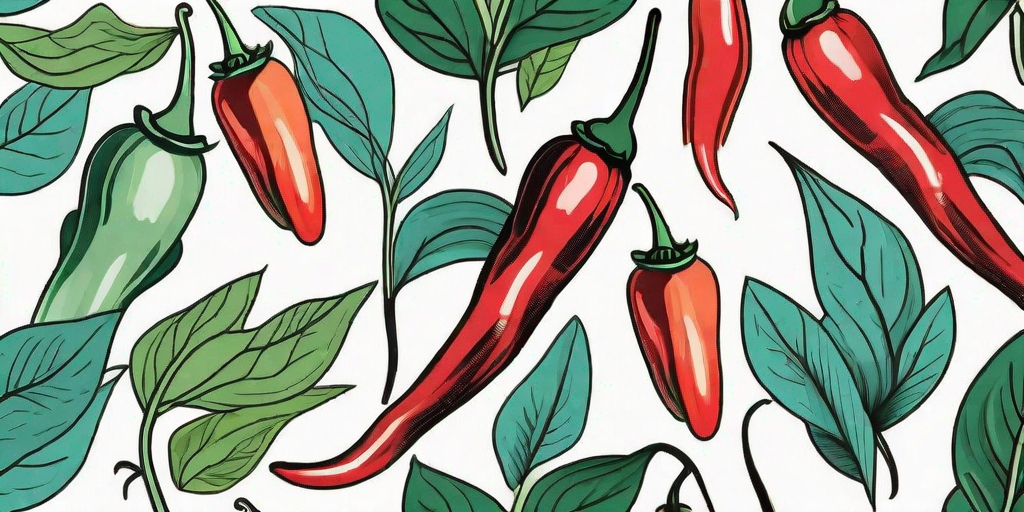
If you're looking to add a little heat to your garden, and we're not talking about installing a new patio heater, then growing hot pepper seedlings might just be the ticket. This guide will take you through the process, from choosing the right seeds to harvesting your fiery fruits. So, buckle up, gardening gloves on, and let's turn up the heat!
Choosing Your Pepper Seeds
First things first, you need to decide what type of hot pepper you want to grow. There's a whole world of heat out there, from the mild jalapeno to the tongue-scorching Carolina Reaper. The choice is yours, but remember, with great power (read: heat) comes great responsibility (read: don't accidentally rub your eyes after handling).
When choosing your seeds, consider the climate of your garden. Some peppers, like the habanero, prefer a hotter, more tropical environment, while others, like the jalapeno, can handle a bit cooler temperatures. It's all about finding the right match for your garden's microclimate.
Where to Buy Pepper Seeds
Now, you might be wondering, where does one procure such fiery seeds? Well, there are plenty of online retailers that specialize in hot pepper seeds. Just make sure to read reviews and choose a reputable seller. Remember, you're not just buying seeds, you're investing in your future culinary adventures.
Alternatively, you could save seeds from a pepper you've bought at the grocery store. However, be aware that these peppers are often hybrids, and the plants they produce may not be exactly like the parent plant.
Starting Your Seedlings
Once you've got your seeds, it's time to get them started. This process, known as germination, is where the magic happens. Or, more accurately, where the science happens. But let's not get bogged down in semantics.
Start by soaking your seeds in warm water for a few hours. This will help to soften the seed coat and speed up germination. Next, plant your seeds in a seed starting mix, about 1/4 inch deep. Keep the soil moist, but not waterlogged, and place in a warm location. A sunny windowsill or heated propagator is ideal.
Patience is a Virtue
Now comes the hard part: waiting. Pepper seeds can take anywhere from 7 to 30 days to germinate, depending on the variety and conditions. So, be patient, young grasshopper. Your fiery harvest will come in time.
While you're waiting, it's a good idea to start planning your pepper garden. Consider factors like sunlight, soil quality, and how much space each plant will need. Remember, a happy pepper plant is a productive pepper plant.
Transplanting and Caring for Your Seedlings
Once your seedlings have sprouted and grown their first set of true leaves (those are the second set of leaves that appear), it's time to transplant them into larger pots. This will give them more room to grow and ensure they get the nutrients they need.
After transplanting, continue to keep the soil moist and provide plenty of sunlight. You should also start feeding your plants with a balanced fertilizer. Just be sure to follow the package instructions to avoid over-fertilizing.
Dealing with Pests
Unfortunately, pests are a part of gardening. But don't worry, there are plenty of ways to deal with them. For aphids and other small insects, a simple spray of water or insecticidal soap can do the trick. For larger pests, like birds or squirrels, consider using netting or other deterrents.
Remember, a little bit of prevention can go a long way. Regularly check your plants for signs of pests and deal with any issues as soon as they arise.
Harvesting Your Peppers
After all your hard work, it's finally time to reap the rewards. Most peppers are ready to harvest when they're fully colored and slightly soft to the touch. However, if you prefer a milder flavor, you can harvest them earlier.
When harvesting, cut the peppers off with a sharp knife or scissors, rather than pulling them off. This will prevent damage to the plant and ensure a continued harvest.
Enjoying Your Harvest
Now for the best part: eating your peppers! Whether you're using them in a spicy salsa, drying them for chili powder, or daring your friends to eat one raw, there's no end to the possibilities. Just remember to handle with care, especially when dealing with super hot varieties.
And there you have it, a comprehensive guide to growing hot pepper seedlings. So, what are you waiting for? It's time to spice up your garden!
FAQs
- Can I grow hot peppers in pots?
Yes, hot peppers can be grown in pots. Just make sure the pot is large enough for the mature plant and has good drainage. - How long does it take to grow hot peppers?
From seed to harvest, it can take anywhere from 60 to 150 days to grow hot peppers, depending on the variety and conditions. - Can I grow hot peppers indoors?
Yes, hot peppers can be grown indoors. They will need plenty of sunlight, so a south-facing window is ideal. You can also use grow lights if necessary.
Final Thoughts
So there you have it, folks. A comprehensive guide to growing hot pepper seedlings that should have you well on your way to a fiery harvest. Remember, gardening is a journey, not a destination. So, enjoy the process, learn from your mistakes, and don't be afraid to get your hands dirty. Happy gardening!











